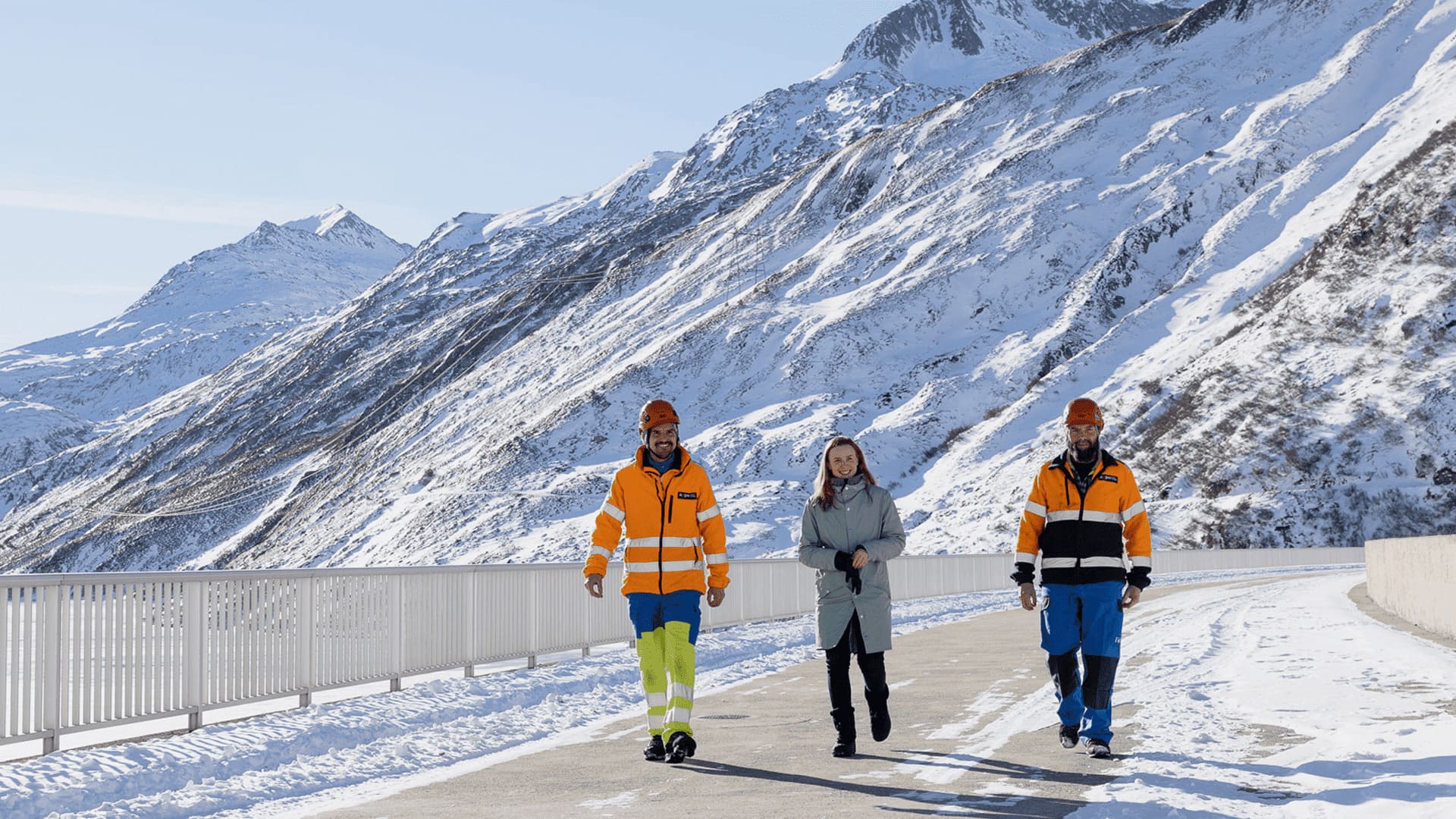04.06.2024 | Interview with Roland Notter and Dominik Amrein
We are planning the grid of the future
As a grid operator, it is our official mandate to ensure a reliable, powerful and efficient grid. Roland Notter and Dominik Amrein from Axpo Grid’s Strategic Asset Management team explain which measures Axpo has already implemented and what the target grid of the future will look like.
The energy transition poses major challenges for distribution grids. So much remains unclear. How are you planning the future grid?
Roland: The starting point for our target grid planning is the scenario framework for Switzerland. The Swiss Federal Office of Energy has been publishing the scenario framework every four years since 2022 and provides forecasts for generation and consumption at the national level. We have ‘regionalised’ these national key figures, i.e. broken them down into political municipalities. We then worked closely with our downstream grid operators to allocate the data to the substations at grid level 3. The data basis for the target grid planning was thereby created taking local developments and projects into account.
The scenario framework for Switzerland (SZR-CH) provides grid operators with a politically supported basis from which to derive the grid expansion requirements. Grid operators also update their own multi-year planning on the basis of the SZR-CH. The SZR-CH was approved by the Federal Council and is binding for the authorities when it comes to planning at grid levels 1 to 3 (>36 kV). Information on the scenario framework for the federal government’s electricity grid planning.
Can you already see the effects of the energy transition on your grid?
Roland: Up until the end of May this year, we were able to record a total of almost 90 hours of feed-in to Swissgrid. This means that more electricity was generated than consumed in our supply area at these times. This is due in large part to the sharp increase in photovoltaic installations. A clear trend can be identified based on historical measurement data from recent years (see figure). While the maximum consumption from the upstream grid remained static (at around 2.7 GW), the minimum consumption decreased considerably and we have been experiencing a feed-in to the upstream grid at certain times since last year.
Taking the SZR-CH into account, we expect a 50% higher peak load in the winter half of 2040 than the current winter peak load. This is due to growing electrification such as electromobility and heat pumps. The maximum feed-in will also rise significantly owing to the considerable expansion of renewable energy sources.
The demands on the grid will therefore rise severely in the future. How is Axpo preparing for this?
Dominik: A comprehensive expansion of the transmission capacity in the Axpo grid was initiated back in the 1980s. The voltage has been gradually changed from 50 to 110 kV, the transformer output has risen and specific grid reinforcements have been made over the past several decades. Thanks to these long-sighted measures, the grid capacity has been almost doubled. Axpo’s strategy focuses on targeted grid expansions and reinforcements, particularly with regard to transformers, in order to effectively equip the grid for the future requirements of a decentralised energy supply.
However, it’s not only the transmission capacity of the electricity grid, but also the stability of the grid voltage that is crucial, and this is sometimes an indicator of the grid quality. Stakeholders such as energy generation plants, data centres and battery storage units have a considerable influence on the grid quality and pose technical challenges when it comes to grid planning. Our employees form expert committees that analyse these challenges, define suitable measures and implement them accordingly. This ensures the smooth operation of the grid in the long term.
‘With the voltage change from 50 to 110 kilovolts, the increase in transformation capacity as well as targeted grid expansions, the Axpo grid will be able to meet the future requirements of the Energy Perspectives 2050+.’
Dominik Amrein is a project engineer in Strategic Asset Management. He specialises in grid planning and the processing of grid connection enquiries and grid studies. He also develops software solutions that are specifically designed to optimise grid planning processes.
Roland Notter is a Senior Project Engineer in Strategic Asset Management and has technical responsibility for grid planning, grid connection enquiries and grid studies. Thanks to his active involvement in numerous specialist committees, he has an excellent network in the industry and contributes to the development of standards.




.jpg)





